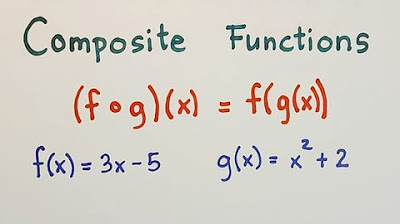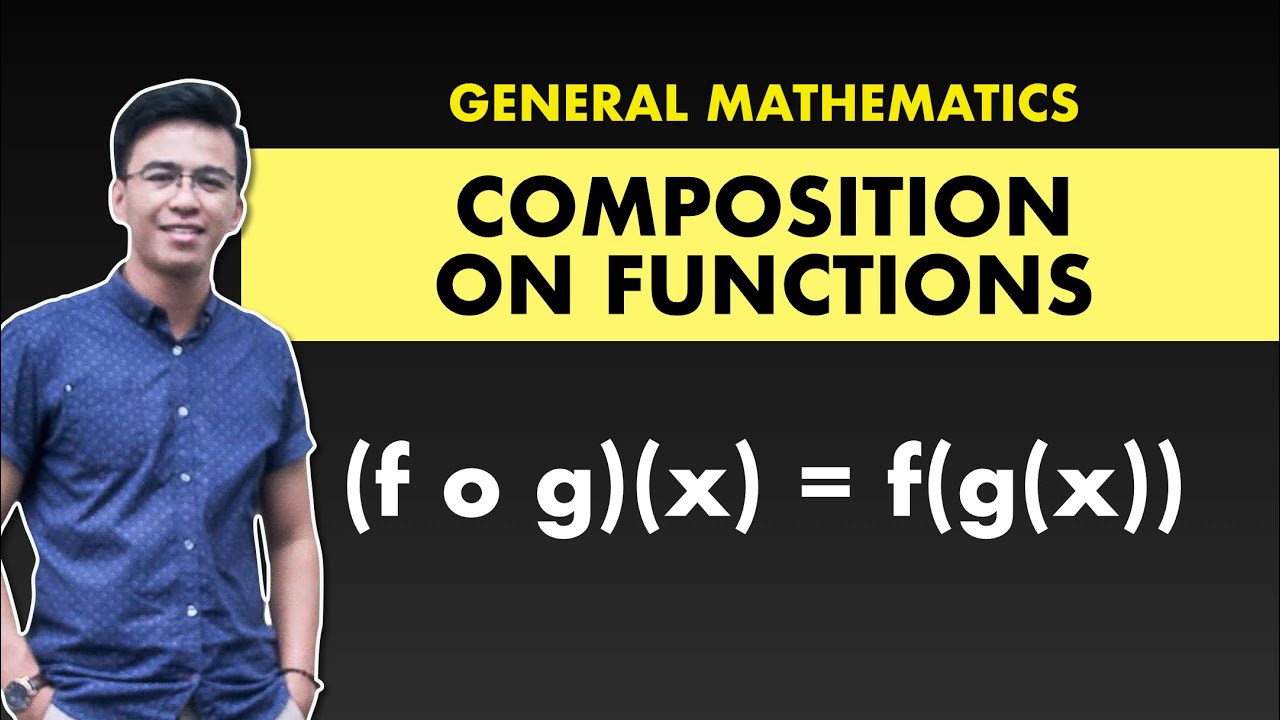Function Operations
Summary
TLDRThe video script explains the operations on two functions, f(x) = 2x + 5 and g(x) = x^2 - 4. It demonstrates how to find the sum (f + g = x^2 + 2x + 1), difference (f - g = -x^2 + 2x + 9), and product (f * g = 2x^3 + 5x^2 - 8x - 20) of the functions. It then discusses the domain of these functions, highlighting that polynomials have a domain of all real numbers, while fractions require excluding values that make the denominator zero. Examples are given to calculate specific values of f and g for certain x inputs, emphasizing the process of substitution and arithmetic operations.
Takeaways
- 🔢 The function f(x) = 2x + 5 and g(x) = x^2 - 4 are given, and their sum f + g results in x^2 + 2x + 1 after combining like terms.
- ➖ The difference f - g is calculated as -x^2 + 2x + 9 by subtracting g(x) from f(x) and simplifying.
- 🔗 The product f * g is found by multiplying the two functions using the FOIL method, resulting in 2x^3 + 5x^2 - 8x - 20.
- 🌐 The domain of f + g, f - g, and f * g is all real numbers since they are polynomials without restrictions.
- 🚫 The domain of f / g is restricted because it involves a fraction; x cannot be the values that make the denominator zero (x ≠ -2, 2).
- 📐 The domain for functions involving fractions is determined by setting the denominator equal to zero to find the vertical asymptotes.
- 📝 Interval notation is used to express the domain of functions with restrictions, excluding the values that make the denominator zero.
- 🔢 To find f(a) + g(b), substitute 'a' into f(x) and 'b' into g(x), then add the results.
- 🔄 To calculate f(a) * g(b), first find the values of f(a) and g(b) separately, then multiply them together.
- 📘 The script provides a comprehensive guide on how to perform operations on functions and determine their domains.
Q & A
What is the function f(x) as described in the transcript?
-The function f(x) is described as f(x) = 2x + 5.
What is the function g(x) as described in the transcript?
-The function g(x) is described as g(x) = x^2 - 4.
How do you find the sum of the functions f(x) and g(x)?
-You add the two functions together, which results in (2x + 5) + (x^2 - 4), and then combine like terms to get x^2 + 2x + 1.
What is the result of f(x) - g(x) according to the transcript?
-The result of f(x) - g(x) is -x^2 + 2x + 9.
How is the product of f(x) and g(x) calculated?
-The product f(x) * g(x) is calculated by multiplying (2x + 5) with (x^2 - 4) using the FOIL method, resulting in 2x^3 + 5x^2 - 8x - 20.
What is the domain of the function f(x) + g(x)?
-The domain of f(x) + g(x) is all real numbers, as it is a polynomial without restrictions.
What is the domain of the function f(x) - g(x)?
-The domain of f(x) - g(x) is also all real numbers, as it is a polynomial without restrictions.
What is the domain of the function f(x) * g(x)?
-The domain of f(x) * g(x) is all real numbers, as it is a polynomial without restrictions.
How do you determine the domain of f(x) / g(x)?
-The domain of f(x) / g(x) is all real numbers except where the denominator g(x) equals zero, which is when x = -2 or x = 2.
What is the interval notation for the domain of f(x) / g(x)?
-The interval notation for the domain of f(x) / g(x) is (-∞, -2) U (-2, 2) U (2, ∞).
What is the value of f(2) + g(3) as described in the transcript?
-The value of f(2) + g(3) is calculated as (4*2 + 5) + (8 - 3^2) which equals 13 - 1, resulting in 12.
What is the value of f(-2) * g(2) according to the transcript?
-The value of f(-2) * g(2) is calculated as (4*(-2) + 5) * (8 - 2^2) which equals (-3) * 4, resulting in -12.
Outlines

このセクションは有料ユーザー限定です。 アクセスするには、アップグレードをお願いします。
今すぐアップグレードMindmap

このセクションは有料ユーザー限定です。 アクセスするには、アップグレードをお願いします。
今すぐアップグレードKeywords

このセクションは有料ユーザー限定です。 アクセスするには、アップグレードをお願いします。
今すぐアップグレードHighlights

このセクションは有料ユーザー限定です。 アクセスするには、アップグレードをお願いします。
今すぐアップグレードTranscripts

このセクションは有料ユーザー限定です。 アクセスするには、アップグレードをお願いします。
今すぐアップグレード5.0 / 5 (0 votes)






